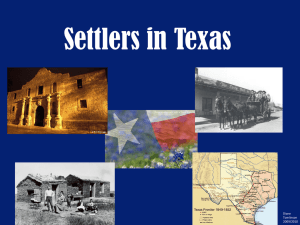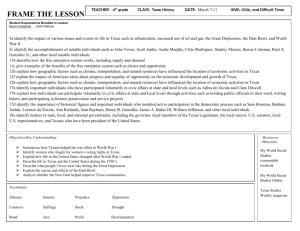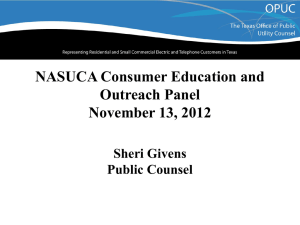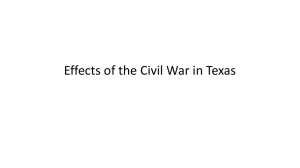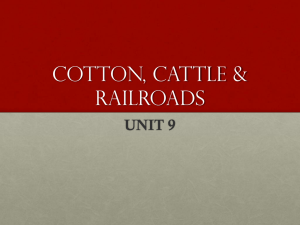Herbert Hoover, Relief Efforts (1931)
advertisement
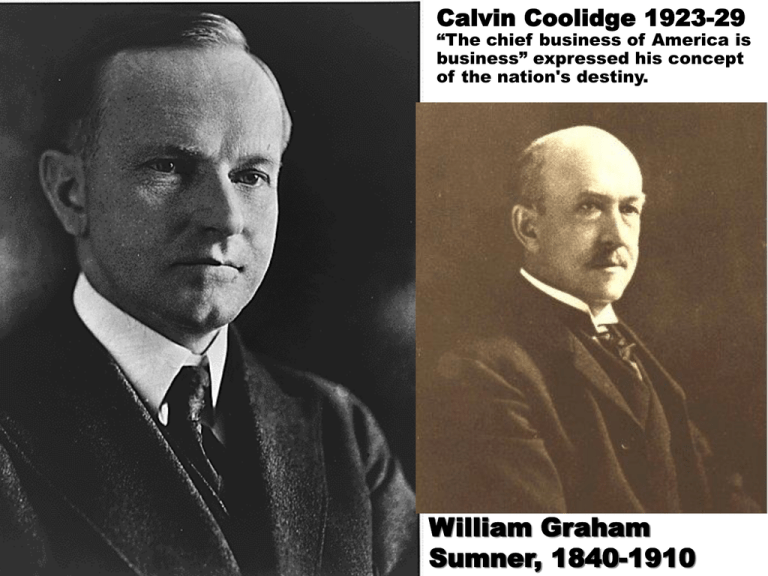
Calvin Coolidge 1923-29 “The chief business of America is business” expressed his concept of the nation's destiny. William Graham Sumner, 1840-1910 The Presidential Election of 1928. New York Governor Alfred E. Smith (1873 - 1944) Herbert Hoover 1929-33 UNDERLYING ECONOMIC WEAKNESSES IN A TIME OF APPARENT PROSPERITY: The prosperity of the 1920s camouflaged serious weaknesses in the U.S. economy. Agriculturists suffered from low prices, a fact that had been mitigated by expanding production. Big business held down wages and increased its profits at the expense of workers and the producers of raw materials. Wealth was unequally distributed: 2 percent of the population controlled 28 percent of the national wealth. The consolidation of money in the hands of the few depressed consumer purchasing power and limited savings, thus weakening most citizens’ ability to weather an economic downturn. By the mid-1920s, the railroad, textile, and coal industries were in trouble, and housing starts and automobile purchases had begun to decline. International trade dropped as the U.S. policy of protective tariffs limited the growth of an already weakened European economy. Consequently, European nations defaulted on their international debts and withdrew investments from the United States. Calvert, De León and Cantrell, 4th ed., 316. Main Street, Cisco, Texas in the 1920s Trade Days in Taylor, Texas, ca. 1920's THE COLLAPSE OF THE STOCK MARKET ON OCTOBER 23, 1929. Heavy speculation in the stock market in the late 1920s created an illusion of prosperity that disguised both industrial weaknesses and a shaky financial network, and although only about 2 percent of all Americans owned stock, the market’s collapse on October 23, 1929, exposed the nation’s economic weaknesses and threw its citizenry into a panic. Calvert, De León and Cantrell, 4th ed., 316. Bread lines during the Great Depression. By 1932, at least one of every four American workers was unemployed, median family income had dropped by 50 percent, a hundred thousand businesses had failed, corporate profits had plummeted from $10 billion to $1 billion, and the gross national product was cut in half. Calvert, De León and Cantrell, 4 ed., 316. th 1929 1933 Banks in operation 25,568 14,771 Prime interest rate 5.03% 0.63% Volume of stocks sold (NYSE) 1.1 B 0.65 B $45.5B $23.9B $15.3B $2.3B Privately earned income Personal and corporate savings Relief line waiting for commodities, San Antonio, Texas. March 1939. Photographer: Russell Lee. Countless thousands of honest, hard-working people lost their homes and farms to the foreclosure’s hammer. Breadlines formed, soup kitchens dispensed food, and apple sellers stood shivering on street corners trying to peddle their wares for five cents. Families felt the stress, as jobless fathers nursed their guilt and shame at not being able to provide for their households. Breadless breadwinners often blamed themselves for their plight, despite abundant evidence that the economic system, not individual initiative, had broken down. Mothers meanwhile nursed fewer babies, as hard times reached even into the nation’s bedrooms, precipitating a decade-long dearth of births. (The American Pageant, 13th edition, pp. 761-762.) Selling apples, Jacksonville, Texas. October, 1939. Photographer: Russell Lee. Many tried apple-selling to avoid the shame of panhandling. In New York City, there were over 5,000 apple sellers on the street. In the 1930s, countless thousands of honest, hard-working people lost their homes and farms to the foreclosure’s hammer. The federal government responded by paying farmers to leave their land fallow. This policy helped to reduce the oversupply of agricultural goods, but it also motivated landowners to evict tenant farmers. Many of these farmers then became migrant farm laborers. In the late 1930s, signs on Route 66 outside of Tulsa, Oklahoma proclaimed: NO JOBS in California Oklahoma Sharecropper Stalled on California Highway (1937) IF YOU are looking for work-KEEP OUT 6 Men for Every Job No State Relief Available for NonResidents From 1930 to 1940, the number of African American tenants in Texas decreased from 65,000 to 32,000, while the number of black farm laborers rose by 25,000; some 20,000 other blacks left the state for better job opportunities. Squatters in Mexican section in San Antonio, Texas. House was built of scrap material in vacant lot in Mexican section of San Antonio, Texas. March 1939. Photographer: Russell Lee. Dust storm in the Panhandle, April 14, 1935. Prints and Photographs Collection, Panhandle--sandstorm file, The Center for American History, The University of Texas at Austin; CN 02655. In 1935 the Dust Bowl covered 100 million acres across the western United States. Visibility in Amarillo that year dropped to zero seven times during the first three months, with one blackout lasting eleven hours. Dust Storm near Dalhart, Texas, 1936 Dust storm approaching Stratford, Texas. Dust bowl surveying in Texas Image ID: theb1365, Historic C&GS Collection. Location: Stratford, Texas. Photo Date: April 18, 1935. Credit: NOAA George E. Marsh Album


